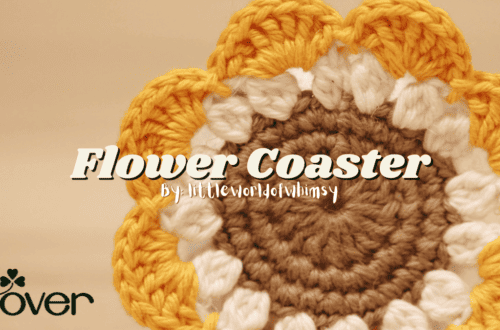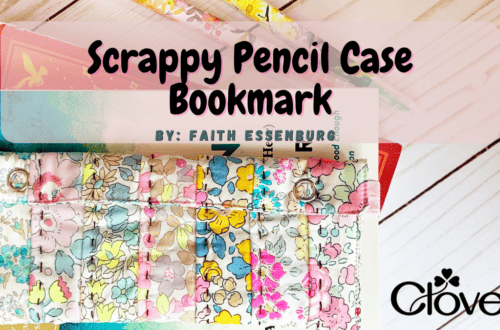Tool School: Mini Weaving Loom
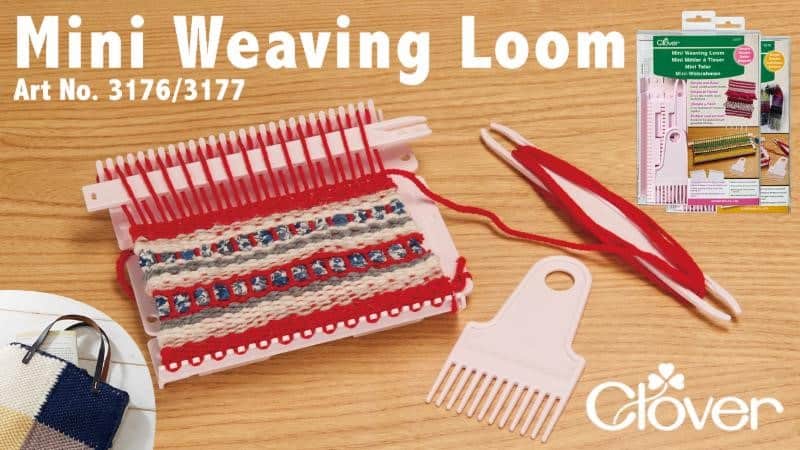
What is it?
When you think about it you’ll have to admit it’s true. Most of us have been weaving since childhood. Remember the square plastic looms we used as children to weave countless preformed cotton loops into all of those square hot pads using that funny looking long hook?
It was great fun because we could select the color patterns for our own personal designs and we were really making something.
Regardless of how far in the past our childhood was, the history of loom weaving predates us all by thousands of years. In medieval times woven tapestries were hung from the interior walls of castles to warm the inhabitants, protecting them from the cold drafts. Ornate tapestries were also used to establish positions of wealth and power of the ruling families as well as for attractive ornamentation.
Perhaps today that elite status is more functionally exemplified by the BMW or Mercedes parked in the driveway. Nevertheless, the use of hand woven objects to provide function and beauty for home decor or fashion continues to grow in popularity. And that brings us to the present.

With the wealth of different fibers, textures, colors and weaving patterns available to us, the creative potential of this art form is virtually unlimited. Using a small hand held loom, today’s weaving practitioner can fabricate any woven project from small wall hangings to decorative pillows to full size blankets.
Fashion is most certainly not excluded either. Hats, scarves, vests, bags, baby clothes or other personal accessories only start to form the list of what can be made. Truly anything is possible. And by the way, it’s still great fun because, once again, we’ve been able to realize our own creative vision. Just like the old days making hot pads for mom.
But how and by what means can we make these beautiful woven objects today? That’s the easy part. We have designed the ultimate Mini Weaving Loom to facilitate our weaving journey.
What does it do?
The Mini Weaving Loom was designed to provide secure support of our warp and weft yarns, allowing us to manipulate and weave them without concern in applying our fibers into our desired pattern. This is important because fibers, textures, colors and weaving patterns are all applied on the loom. The essential parts of the mini weaving loom are:
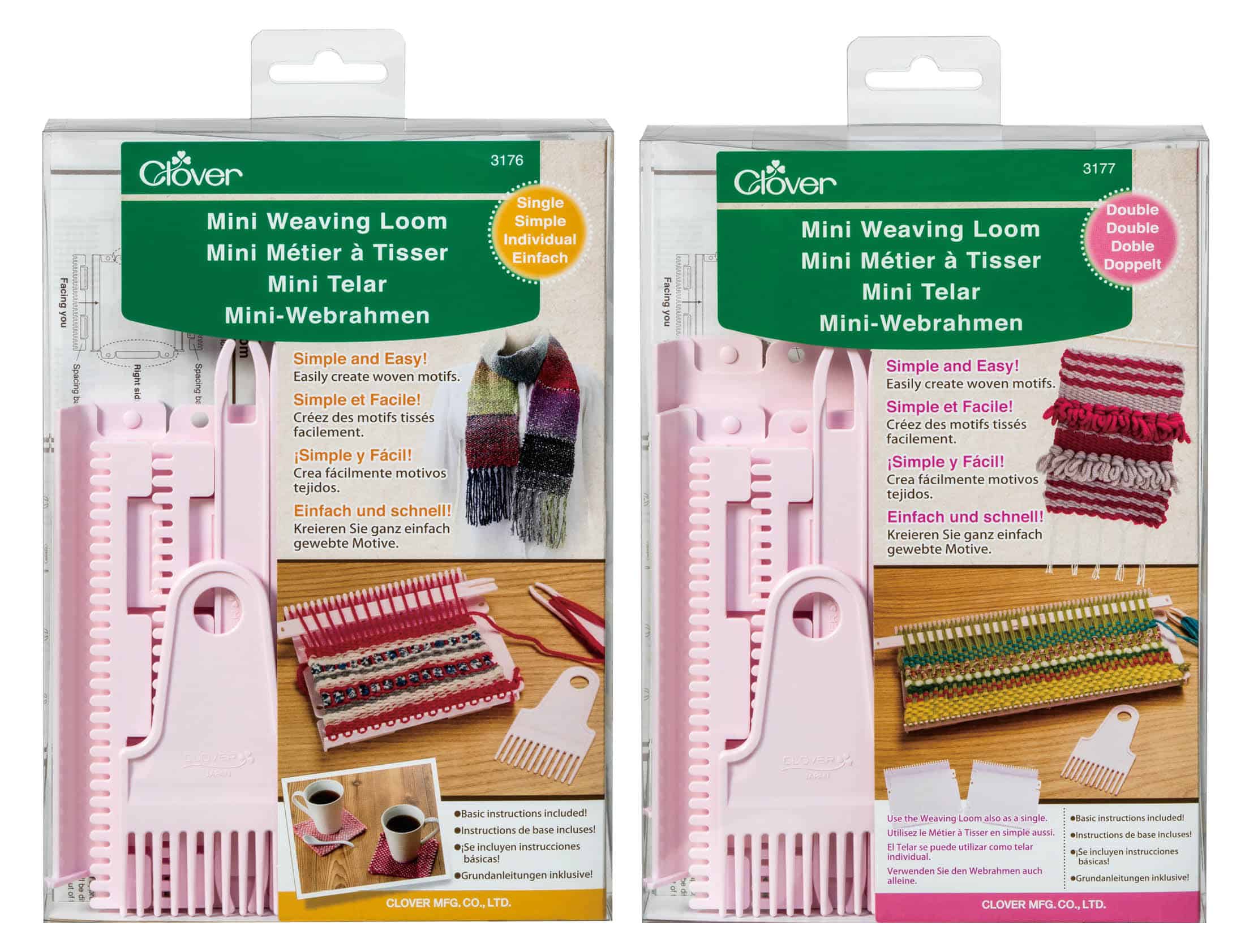
Mini Weaving Loom (Single & Double)
Art No. 3176 & 3177
Mini Weaving Loom
The “Mini” is available in either a single or a double configuration. The single size can produce swatches approximately 4 3/4″ square. The double size produces the obvious multiple, 4 3/4″ by 9 1/2″. The vertical ends of the loom present the spacing bars. These pegs allow us to set our warp threads securely and in the spacing suitable for our chosen project.
Shed Stick
The gap between the alternating upper and lower warp threads is often called the “shed”. The shed stick holds this area open in an exaggerated manner allowing the shuttle carrying our weft thread to easily pass through.
Weaving Shuttle
This is the tool that carries our weft yarn back and forth through our warp threads. It allows us to load up a significant length of yarn for weft manipulation.
Long Needle
This handy item is used to replace the weaving shuttle when available space becomes too limited. We use it for the finishing touches. It is also ideal for adding secondary decorative weft yarns in applications where the weaving shuttle is not suitable.
Weaving Comb
The weaving comb is used to press each row of weft thread against the previous row. That ensures the uniformity of our weaving pattern, making it smooth and even.
Fringed Woven Coaster & Place Mat 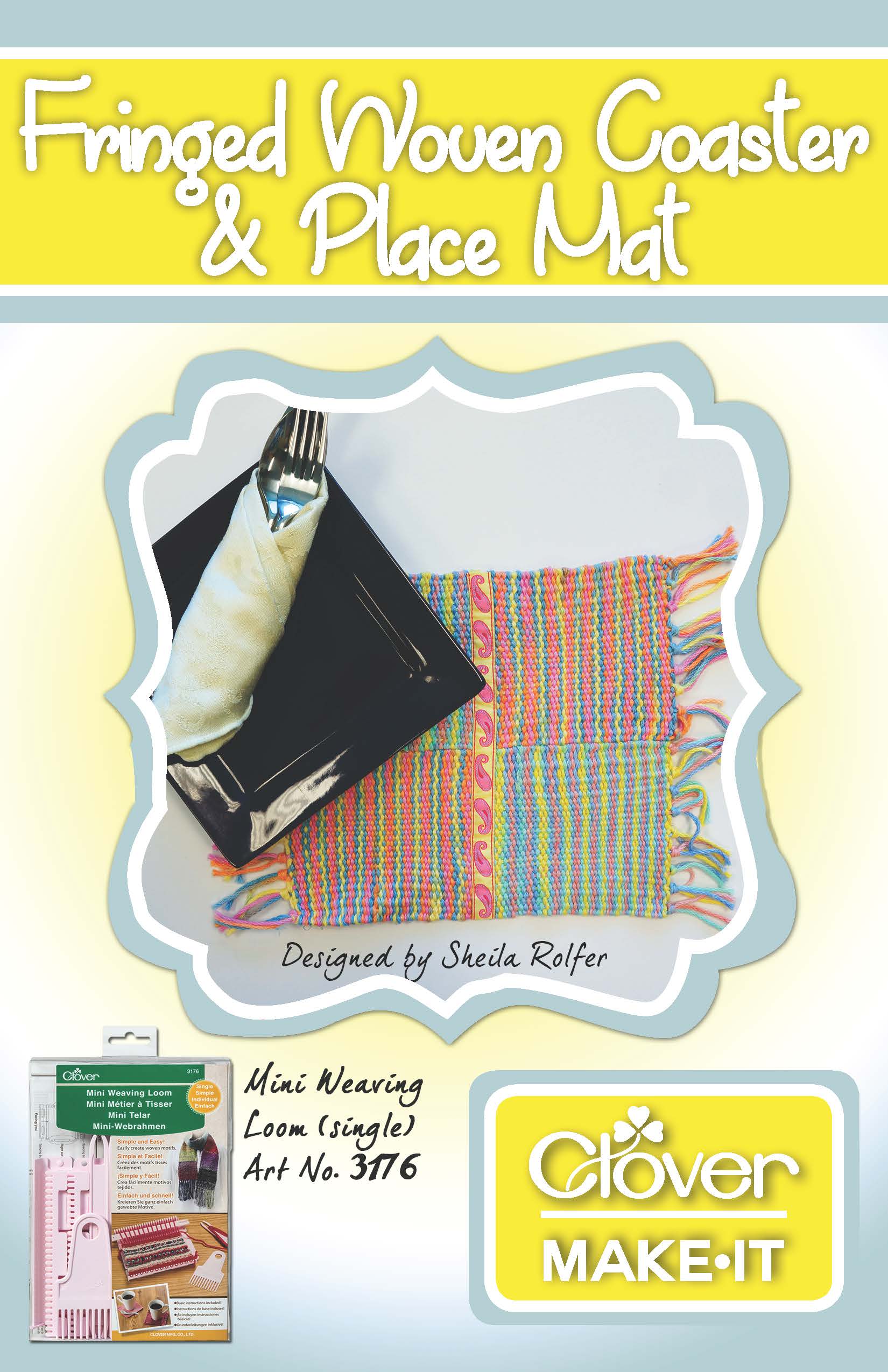
Watch Tool School here:
For a Tutorial:
Sign up for Tool School, our bi-monthly e-newsletter.
Visit our Tool School website!
Stay connected with Clover on Facebook | Twitter | Instagram | Pinterest | YouTube | Ravelry
